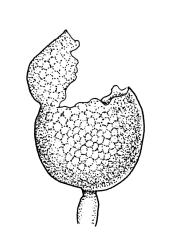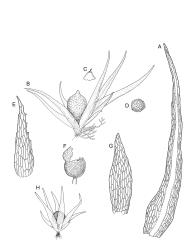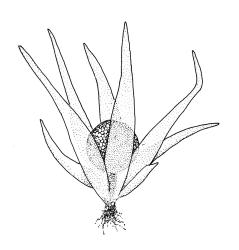- ≡ Phascum tenerum Bruch & Schimp., Laubm. Eur. Monogr. 2 (1835)
- ≡ Nanomitrium tenerum (Bruch & Schimp.) Lindb., Not. Sallsk. Fauna Fl. Fenn. Forh. 13: 409 (1874)
Plants exceedingly minute, with sparse and persistent protonema. Leaves widely spreading, linear-lanceolate, the largest c. 1.0–1.5 × 0.2–0.25 mm, bluntly toothed or nearly entire above. Costa absent.
Reportedly autoicous (♂ not seen in N.Z. material). Capsules c. 0.25 mm diam., red-brown, dehiscing above the equator; stomata, annulus, and peristome absent. Spores 30–36 µm, coarsely bullate-papillose, somewhat triangular in polar view, the proximal surface retaining 3 somewhat flattened surfaces and occasionally with a weak trilete scar, the distal surface rounded.
Smith 2004, fig. 123, 1–3.
NI: N Auckland (Pakuranga, Pōkeno), S Auckland (Kōpuku).
Adventive. North America, Europe* including Britain, East Asia.
On damp soil at low elevations; one collection occurred in association with Ephemerum serratum.
Distinguished from the species of Ephemerum occurring in N.Z. by the much sparser protonema, the smaller diameter and dehiscent nature of the capsule, the presence of a minute and persistent calyptra, as well as leaf and spore characters. This species is considered critically endangered in Britain (Smith 2004).







